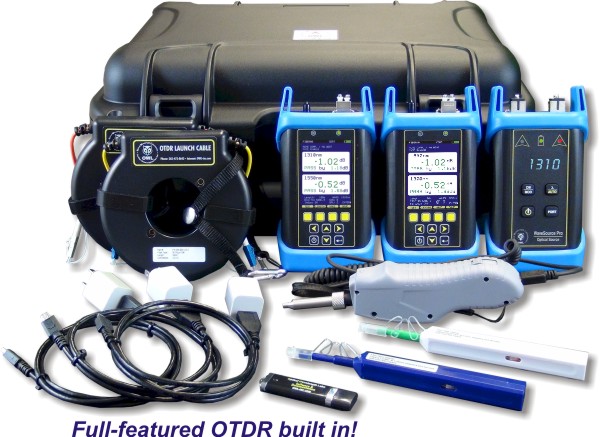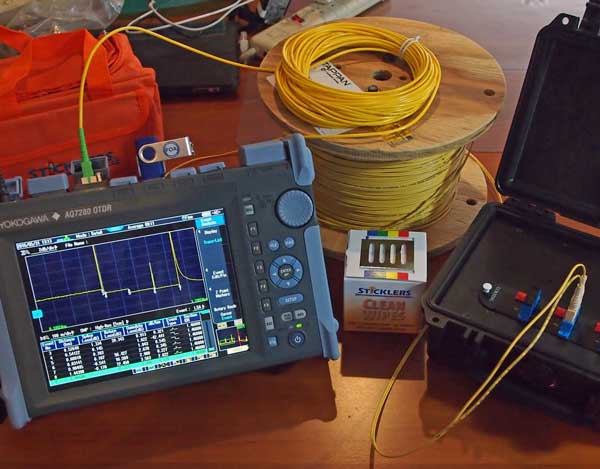Discovering the Effect of Robotic Vision on Modern Manufacturing Techniques and High Quality Control
Robotic vision innovation is changing the landscape of modern-day production and quality assurance. By integrating advanced imaging systems and expert system, suppliers can achieve extraordinary degrees of accuracy and effectiveness. This shift not just maximizes production processes but also addresses essential obstacles in preserving item requirements. As markets increasingly depend on these innovations, the ramifications for future manufacturing methods remain to be fully explored. What will this imply for the competitive characteristics of the market?
Understanding Robotic Vision Technology
Robotic vision modern technology acts as the backbone of automation in modern-day manufacturing. It includes making use of cameras, sensing units, and man-made intelligence to allow robotics to interpret and reply to visual information from their environment. This innovation enables robots to determine, situate, and review items, making them with the ability of executing complex jobs such as assembly, examination, and material handling with precision. The combination of equipment discovering algorithms better improves the capability of robot vision systems, enabling them to adjust to differing conditions and improve in time. By refining photos and data in real-time, robotic vision systems can help with quicker decision-making and lower mistakes in making procedures (fibre testing equipment). This technology not only boosts functional efficiency but likewise guarantees that quality standards are fulfilled constantly. As the manufacturing landscape proceeds to advance, recognizing the details of robotic vision technology comes to be necessary for leveraging its possible fully
Benefits of Robotic Vision in Manufacturing
Robotic vision innovation supplies significant advantages in manufacturing by enhancing accuracy and precision in jobs such as top quality control and setting up. This raised level of detail assurances that items fulfill rigorous standards, decreasing waste and remodel. Furthermore, the assimilation of robotic vision can cause enhanced manufacturing effectiveness, allowing producers to optimize their procedures and accomplish higher outcome rates.
Boosted Precision and Accuracy
In contemporary manufacturing, enhanced precision and accuracy are vital for maximizing manufacturing processes and guaranteeing item high quality. Robotic vision systems make it possible for machines to execute complex tasks with impressive consistency. These systems utilize innovative imaging innovations to detect minute details and variations in materials, components, and ended up items. By assessing visual data in real-time, robotic vision substantially minimizes human mistake, bring about less issues and higher high quality requirements. Additionally, improved accuracy in measurements and positioning facilitates much better alignment in setting up procedures, which is vital for complex designs. Inevitably, the assimilation of robot vision not just strengthens the integrity of manufacturing outcomes however additionally fosters self-confidence among consumers pertaining to product stability and efficiency. This accuracy is important in industries where quality is critical.
Boosted Production Performance

Suppliers are increasingly turning to vision systems to increase manufacturing efficiency across various procedures. These innovative systems enable real-time assessment and surveillance, considerably lowering downtime triggered by errors or defects. By integrating robot vision, firms can automate top quality control, enabling for faster recognition of issues and reducing the need for human treatment. This brings about structured process, as robots can rapidly adjust to changes in manufacturing needs without sacrificing precision. Vision systems promote far better inventory management by precisely tracking components and products, making certain suitable resource usage. Ultimately, the fostering of robot vision not only boosts performance however also adds to greater outcome rates, minimized operational expenses, and improved general performance in the manufacturing industry.
Enhancing Quality Assurance Processes
Robotic vision innovation considerably improves top quality control procedures in production by using precision examination techniques. These advanced systems assist in real-time defect detection, making certain that items fulfill rigorous quality criteria. As a result, producers can reduce waste and improve general efficiency.
Precision Inspection Techniques
Accuracy assessment techniques have changed quality assurance procedures in manufacturing, allowing the detection of min issues that traditional methods may ignore. These strategies leverage progressed imaging technologies, such as high-resolution video cameras and laser scanning, to attain unmatched accuracy. By utilizing robot vision systems, suppliers can automate evaluation jobs, making certain regular efficiency and minimizing human mistake. The integration of artificial intelligence formulas additionally improves these systems, permitting them to adapt and boost over time. Furthermore, precision assessment facilitates the recognition of subtle variations in product measurements and surface coatings, which Resources can greatly influence general item quality. Consequently, suppliers can apply restorative activities extra promptly, inevitably causing lowered waste and enhanced customer satisfaction.
Real-Time Issue Detection
Utilizing innovative imaging technologies, real-time issue detection changes top quality control processes in production. By incorporating high-resolution electronic cameras and innovative algorithms, manufacturers can quickly recognize abnormalities during manufacturing. This modern technology helps with prompt restorative actions, decreasing waste and improving overall effectiveness. Real-time systems assess products as they move along the production line, ensuring that issues are discovered and addressed without delaying a knockout post manufacturing timetables. In enhancement, the implementation of artificial intelligence improves the accuracy of these systems, enabling them to adapt to brand-new issue patterns over time. Consequently, makers take advantage of improved product high quality and lowered operational expenses. Inevitably, real-time issue discovery not only enhances processes however also promotes a culture of continual enhancement in modern-day production settings.
Real-Time Data Analysis and Decision Making
In the vibrant landscape of production, real-time information evaluation encourages systems to make swift, educated choices. By leveraging innovative robot vision technologies, producers can gather and process vast amounts of information immediately. These systems examine visual inputs to monitor production procedures, ensuring that any type of discrepancies from high quality criteria are detected and resolved immediately. Producers can optimize procedures by reallocating sources and changing workflows based on real-time understandings.
Moreover, the assimilation of information analytics enables anticipating maintenance, where prospective devices failures are anticipated prior to they disrupt manufacturing. This positive method minimizes downtime and improves total efficiency. optical fibre diameter analyser. The ability to make data-driven choices in actual time significantly minimizes waste and improves item quality, enabling manufacturers to react to market demands quickly. Therefore, real-time information evaluation not only simplifies production yet additionally cultivates a society of continuous improvement in modern manufacturing environments
Difficulties in Applying Robotic Vision Equipments
Carrying out robotic vision systems in making offers a variety of challenges that can prevent their efficiency. One considerable challenge is the intricacy of integrating these systems with existing equipment and process. Producers typically encounter compatibility problems with tradition equipment, resulting in enhanced expenses and downtime. Additionally, the variability in item shapes, sizes, and materials can make complex the calibration of vision systems, demanding comprehensive training and fine-tuning.
One more obstacle hinges on refining large quantities of aesthetic information in real time. High-performance computing sources are essential, which may need further financial investment in facilities. i loved this Furthermore, there is a lack of proficient personnel efficient in managing and keeping these innovative systems, resulting in potential operational inefficiencies. Ultimately, making certain the integrity and precision of robotic vision systems under varying environmental problems positions a continual difficulty. Resolving these concerns is vital for optimizing the prospective advantages of robotic vision in production.
Future Fads in Robotic Vision for Production
As advancements in expert system and artificial intelligence continue to develop, the future of robot vision in production appears progressively encouraging. Arising trends suggest a shift towards more advanced imaging technologies, such as 3D vision systems and hyperspectral imaging, which will improve accuracy in quality control processes. Combination with the Internet of Points (IoT) will allow real-time information evaluation, allowing robotic systems to adapt swiftly to adjustments in the production environment. The growth of joint robotics (cobots) outfitted with advanced vision capabilities is expected to facilitate smooth human-robot communications, enhancing performance and safety and security on the manufacturing facility floor. Additionally, the unification of side computer will equip robotic vision systems to process data in your area, decreasing latency and making it possible for faster decision-making. These innovations will certainly not just improve producing processes but also greatly boost product quality, placing robot vision as a keystone of future industrial procedures.
Frequently Asked Questions
Exactly How Much Does Robotic Vision Innovation Usually Cost?
Robotic vision technology generally costs between $10,000 and $100,000, depending on the complexity and requirements. Aspects influencing rate include sensing unit top quality, software application capabilities, and assimilation demands, making it important to assess certain project requirements.
What Industries Are Many Affected by Robotic Vision Innovations?
Robotic vision innovations substantially impact sectors such as manufacturing, automotive, electronic devices, and food processing - optical measurement system. These sectors gain from boosted automation, enhanced quality assurance, and raised efficiency, leading to streamlined operations and reduced labor expenses
Can Robotic Vision Systems Be Integrated With Existing Machinery?
Robotic vision systems can without a doubt be incorporated with existing machinery. This combination improves functional efficiency, enabling manufacturers to take advantage of progressed technologies without the demand for complete overhauls, thus maximizing manufacturing processes and preserving top quality requirements.

What Abilities Are Needed to Run Robotic Vision Systems?
Running robot vision systems requires proficiency in shows, an understanding of maker learning, expertise of image processing methods, and the capacity to repair equipment and software issues, making sure smooth combination and optimal performance within making atmospheres.
Are There Any Safety And Security Worries With Robotic Vision in Manufacturing?
